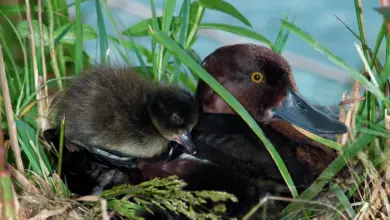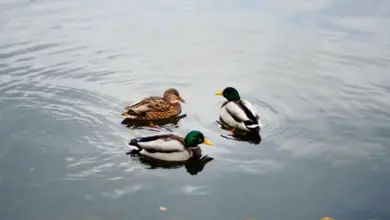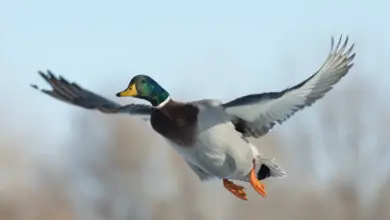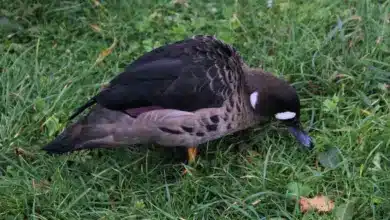The Orpington Ducks (Anas platyrhynchos Orpington) were named after the hometown of the man who originated the breed, Mr. W. Cook of England. They are the result of a cross-breeding program between Indian Runner, Rouen, and Aylesbury Ducks.

The Orpington Duck is a dual-purpose breed that is raised for both eggs and meat. Females can lay up to 220 eggs per year.
Although nowadays it is well respected for its plumage and coloring, and these ducks are now often raised by duck hobbyists for ornamental purposes, or kept as pets.
The life expectancy of domestic ducks kept as pets is 8 to 12 years.
Description
The Orpington is a medium-sized domestic duck weighing around 7 to 8 pounds (3.1 – 3.6 kg). It was noted that the plumage coloration in females fades as they age.
- Blue Orpington Duck: Much less common than the Buff Orpington Duck.
- Buff Orpington Duck: A descendant of the Blue Orpington duck breed.
- Plumage: The buff variety is by many considered to be the most attractive with its rich red- or golden-buff-colored plumage.
Reproduction
Orpington Ducks lay eggs with white or light gray shells. Buff Orpington Ducks lay tinted eggs. The eggs are incubated for about 28 days before hatching.
Orpington ducks are easy to raise and are often raised by duck hobbyists for ornamental purposes.
Shelter and Care Requirements
All domestic ducks need to be provided with a shelter that will protect them from wind and rain. Orpington Ducks require only a low fence due to their limited flight ability.
They need to have access to regular duck feed and clean water at all times.





